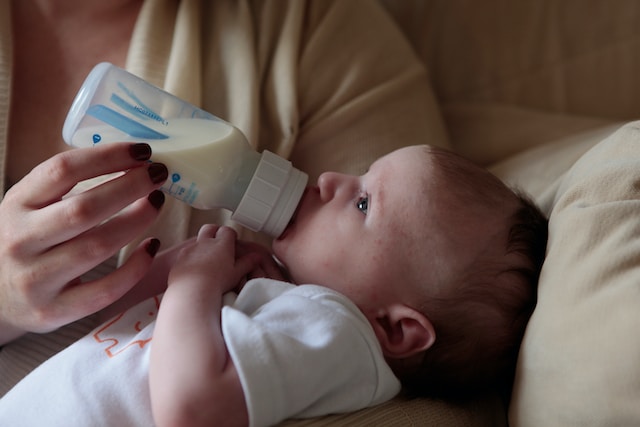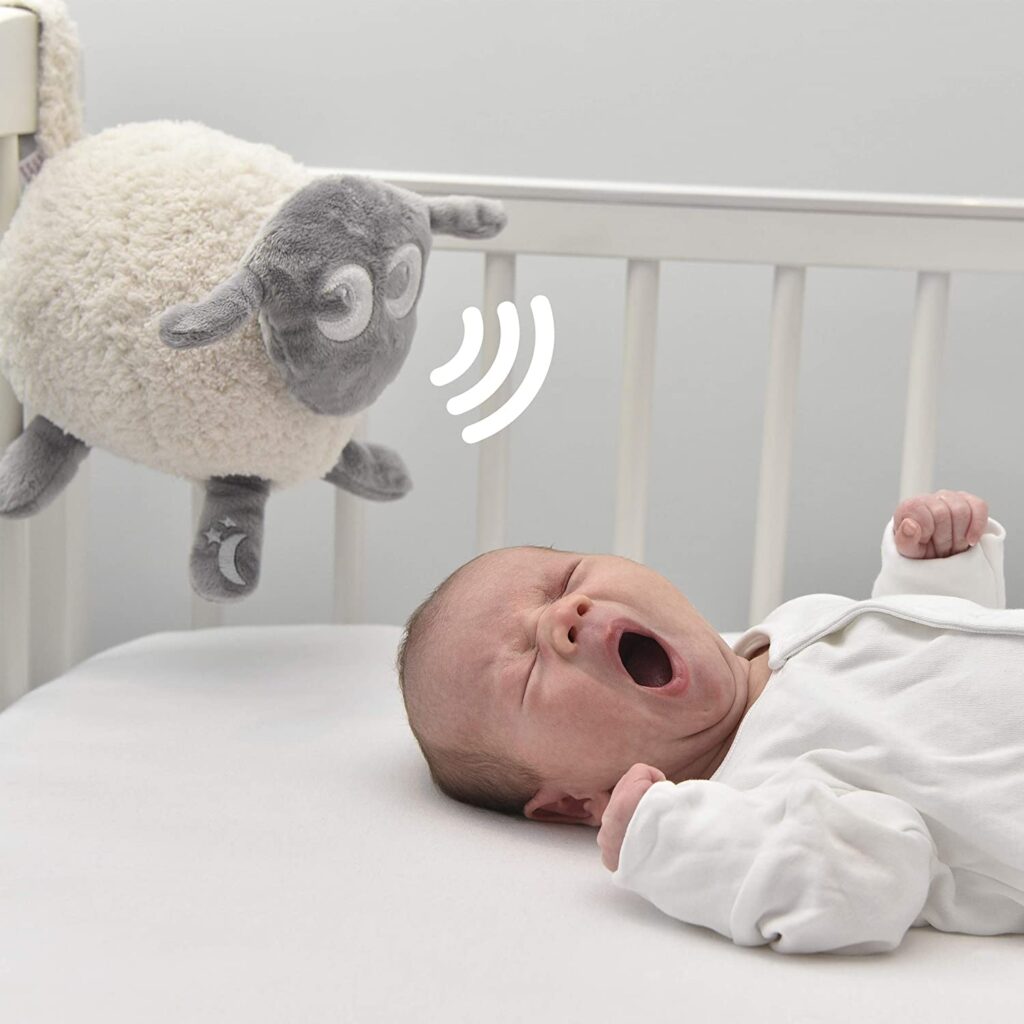Welcome to our comprehensive guide on helping your baby sleep peacefully. As parents, we understand the importance of a good night’s sleep for both you and your little one. In this article, we will share valuable insights and strategies that can assist you in creating a soothing and comfortable sleep environment for your baby. Our aim is to provide you with practical tips and emotional support, ensuring that your baby gets the restful nights they deserve.
Understanding the Importance of Quality BABY Sleep
Quality sleep is crucial for your baby’s overall well-being and development. Not only does it promote physical growth, but it also aids cognitive and emotional development. Sound sleep helps your baby to consolidate memories, regulate emotions, and recharge for the day ahead. As parents, it’s essential to prioritize your baby’s sleep routine, allowing them to reap the numerous benefits that come with restful nights.
Establishing a Consistent Bedtime Routine

A consistent bedtime routine is the foundation for a peaceful night’s baby sleep. By establishing a predictable sequence of activities, you can signal to your baby that it’s time to wind down and prepare for sleep. Consider incorporating the following elements into your baby’s bedtime routine:
Bath Time Bliss

A warm and relaxing bath can soothe your baby, preparing them for a restful sleep. Use gentle, baby-friendly products and maintain a calm atmosphere during bath time.
Cozy Cuddle Sessions

After bath time, create a cozy and comfortable space for some intimate bonding. Cuddle, sing lullabies, or read a soothing bedtime story to help your baby relax and feel loved.
Dim the Lights

Lower the lights in your baby’s room to create a calm and serene environment. Soft lighting sends signals to your baby’s brain that it’s time to sleep, encouraging the production of the sleep hormone, melatonin.
Gentle Massage

Consider incorporating a gentle massage into your baby’s routine. Use baby-safe oils and employ slow, soothing strokes to relax their muscles and promote tranquility.
Bedtime Feeding

Depending on your baby’s age and feeding schedule, a gentle feeding session before bed can provide comfort and satiety. Ensure your baby is adequately burped to prevent discomfort during sleep.
Creating a Comfortable Sleep Environment

The sleep environment plays a significant role in promoting a restful night for your baby. Follow these tips to ensure your baby sleep environment is conducive to peaceful slumber:
Optimal Temperature

Maintain a room temperature between 68-72°F (20-22°C) to keep your baby comfortable. Dress them in appropriate sleepwear, ensuring they are neither too hot nor too cold.
White Noise and Lullabies

Use white noise machines or soothing lullabies to create a calming background sound that drowns out external disturbances. These gentle sounds can help your baby relax and fall asleep faster.
Safe and Cozy Crib

Ensure that your baby’s crib is a safe and cozy haven. Use a firm mattress with a fitted sheet, and avoid placing any loose bedding, stuffed animals, or pillows in the crib to reduce the risk of suffocation.
Blackout Curtains
Install blackout curtains or blinds to minimize external light sources that could disrupt your baby’s sleep. A darkened room promotes melatonin production, enhancing the quality of your baby sleep.
Understanding BABY Sleep Cues and Soothing Techniques
Recognizing your baby’s sleep cues and employing effective soothing techniques can make a significant difference in their ability to fall asleep and stay asleep. Here are some cues to watch for and techniques to try:
Drowsiness Signs: Look for signs of drowsiness, such as yawning, eye rubbing, or decreased activity. These cues indicate that your baby is ready for sleep. Seize the moment to put them down to rest.
Swaddling: Swaddling can provide a sense of security and mimic the cozy environment of the womb. Use a lightweight, breathable swaddle blanket to comfortably wrap your baby, ensuring they are snug but not constricted.
Rocking and Swaying: Gently rocking or swaying your baby in your arms, a rocking chair, or a baby swing can be soothing. The rhythmic motion mimics the movement they experienced in the womb, promoting relaxation.
Pacifiers: If your baby has a strong sucking reflex, offering a pacifier can provide comfort and help them self-soothe. Consider using pacifiers that are specifically designed for safe sleep.
The Importance of Healthy Baby Sleep Habits
Establishing healthy baby sleep habits is essential for your baby’s well-being and development. It not only benefits their physical growth but also nurtures their cognitive and emotional development. Adequate sleep allows your baby to recharge, process new information, and regulate their emotions effectively. By implementing effective baby sleep training methods, you can empower your baby to develop healthy sleep patterns that will benefit them throughout their lives.

Method 1: The Ferber Method (Progressive Waiting)
The Ferber Method, also known as progressive waiting, is a widely recognized sleep training technique. It involves gradually teaching your baby to self-soothe and fall asleep independently. Here’s how it works:
Establish a Bedtime Routine: Create a consistent bedtime routine that includes calming activities such as a warm bath, gentle massage, and reading a bedtime story. This routine will signal to your baby that it’s time to sleep.
Put Your Baby to Bed Drowsy: Instead of waiting for your baby to fall asleep in your arms, put them in their crib while they are drowsy but still awake. This helps them learn to self-soothe and fall asleep independently.
Progressive Waiting: If your baby cries or fusses, wait for a short period (e.g., 3 minutes) before offering reassurance. Gradually increase the waiting time between intervals (e.g., 5 minutes, 10 minutes), allowing your baby the opportunity to self-settle.
Reassurance without Picking Up: When you go into your baby’s room during the waiting intervals, offer comforting words and gentle touch, but avoid picking them up. This reinforces the message that they can fall asleep on their own.
Consistency is Key: Consistency is crucial when using the Ferber Method. Stick to the routine and progressively increase the waiting intervals over time. With practice, your baby will learn to self-soothe and fall asleep independently.
Method 2: The Weissbluth Method (Extinction)
The Weissbluth Method, also known as extinction, involves letting your baby self-soothe and learn to fall asleep without any parental intervention. Here’s how you can implement this method effectively:
Follow a Bedtime Routine: Establish a consistent bedtime routine that includes calming activities to signal to your baby that it’s time to sleep.
Put Your Baby to Bed Awake: Place your baby in their crib while they are still awake but drowsy. This allows them to learn self-soothing techniques and fall asleep independently.
Minimal Intervention: With the Weissbluth Method, you refrain from providing any form of reassurance or intervention during the night. This can be challenging for parents, but it allows your baby to learn to fall asleep without relying on external assistance.
Trust the Process: While it may be difficult to listen to your baby cry, it’s important to trust that they are safe and gradually learning to self-soothe. Over time, they will become more skilled at falling asleep independently.
Stay Consistent: Consistency is key when using the Weissbluth Method. Stick to the routine and avoid giving in to the temptation of intervening. With time, your baby will learn to sleep through the night more peacefully.
Method 3: The Chair Method (Gradual Withdrawal)
The Chair Method, also known as gradual withdrawal, provides a gentle approach to sleep training. It involves gradually reducing parental presence until your baby learns to fall asleep on their own. Here’s how you can implement this method:
Bedtime Routine: Begin with a soothing bedtime routine that prepares your baby for sleep. This routine helps create a calm and relaxing environment.
Sit Beside the Crib: Initially, sit beside your baby’s crib as they fall asleep. Offer verbal reassurance and gentle touch to provide comfort.
Gradual Withdrawal: Over several nights, gradually move your chair farther away from the crib. The goal is for your baby to feel comfortable falling asleep without your physical presence.
Reassurance without Touch: As you move your chair away, continue to offer verbal reassurance to let your baby know you are still there for them. Avoid picking them up or engaging in extended interactions.
Encourage Independence: With the gradual withdrawal approach, you’re encouraging your baby to develop self-soothing skills and fall asleep independently.
Related : According to a study published in the journal Current Biology, Japanese researchers discovered that by holding a crying baby for five minutes and then spending eight minutes sitting with them, a caregiver can effectively calm the child and potentially help them fall asleep.
Method 4: The No Tears Method (Gradual Retreat)
The No Tears Method focuses on a gentle and gradual approach to baby sleep training, minimizing distress for both parent and baby. Here’s how you can implement this method:
Establish a Calming Bedtime Routine: Create a consistent and calming bedtime routine that prepares your baby for sleep. This routine helps signal that it’s time to wind down.
Place Your Baby in the Crib Awake: Instead of waiting for your baby to fall asleep in your arms, gently place them in their crib while they are still awake. This allows them to learn to self-settle.
Stay Close and Offer Comfort: Sit or lie down next to the crib, providing verbal reassurance and gentle touch to soothe your baby. Gradually, over several nights, move a little farther away each time.
Gradually Retreat: As you move away, continue to offer verbal reassurance from a distance. Your presence and soothing words will help your baby feel secure while encouraging them to fall asleep independently.
Patience and Consistency: The No Tears Method requires patience and consistency. It may take time for your baby to adjust, but with gentle encouragement, they will develop the skills to self-soothe and sleep more peacefully.
Method 5: The Cry It Out Method (Extinction)
The Cry It Out Method, also known as extinction, involves allowing your baby to self-soothe and learn to fall asleep without parental intervention. While it can be emotionally challenging, it has been effective for some families. Here’s how you can approach this method:
Bedtime Routine: Establish a consistent bedtime routine that helps your baby understand it’s time for sleep. This routine sets the stage for the upcoming sleep training process.
Place Your Baby in the Crib Awake: Put your baby in the crib while they are still awake but drowsy. This helps them associate their crib with sleep and learn to self-soothe.
No Interventions: Once you leave the room, avoid going back in unless there is a specific need such as feeding or a diaper change. Allow your baby to cry and self-soothe.
Related : BABIES WON’T STOP CRYING – POSSIBLE CAUSES
Resist the Urge to Intervene: While it can be difficult to hear your baby cry, resist the urge to intervene. Keep reminding yourself that they are safe and learning to fall asleep independently.
Stay Consistent: Consistency is key when using the Cry It Out Method. Stick to the routine and trust that your baby will gradually learn to self-soothe and sleep more peacefully.
Method 6: The Pick Up Put Down Method
The Pick Up Put Down Method provides a hands-on approach to sleep training, focusing on providing comfort and reassurance to your baby. Here’s how you can implement this method:
Bedtime Routine: Begin with a soothing bedtime routine to create a calm and relaxing atmosphere.
Put Your Baby in the Crib Awake: Place your baby in the crib while they are still awake but drowsy. This allows them to learn to fall asleep independently.
Pick Up for Soothing: If your baby becomes upset, pick them up and offer comfort. Calm them down and then gently put them back in the crib once they have settled.
Repeat as Needed: If your baby continues to cry or fuss, repeat the process of picking them up, comforting them, and putting them back down. Gradually, they will learn to self-soothe and fall asleep independently.
Consistency and Patience: Consistency is vital when using the Pick Up Put Down Method. It may take time for your baby to adjust, but with patience and reassurance, they will develop healthy sleep habits.
As parents, we understand the emotional journey of baby sleep training. By exploring various methods such as the No Tears Method, Cry It Out Method, and Pick Up Put Down Method, you can find an approach that aligns with your parenting style and your baby’s needs. Remember, there is no one-size-fits-all solution, and it’s important to choose a method that resonates with you and your baby. With love, patience, and emotional support, you can help your little one achieve peaceful and restful nights.. Remember to be patient and understanding as you support your baby through their sleep journey. With your love and care, you can help them enjoy restful nights and wake up refreshed, ready to explore the world around them.
Happy Parenting!
“Baby Naming Genie includes affiliate links. If you make a purchase through these links, I may earn a small commission at no extra cost to you. Your support is appreciated!”




